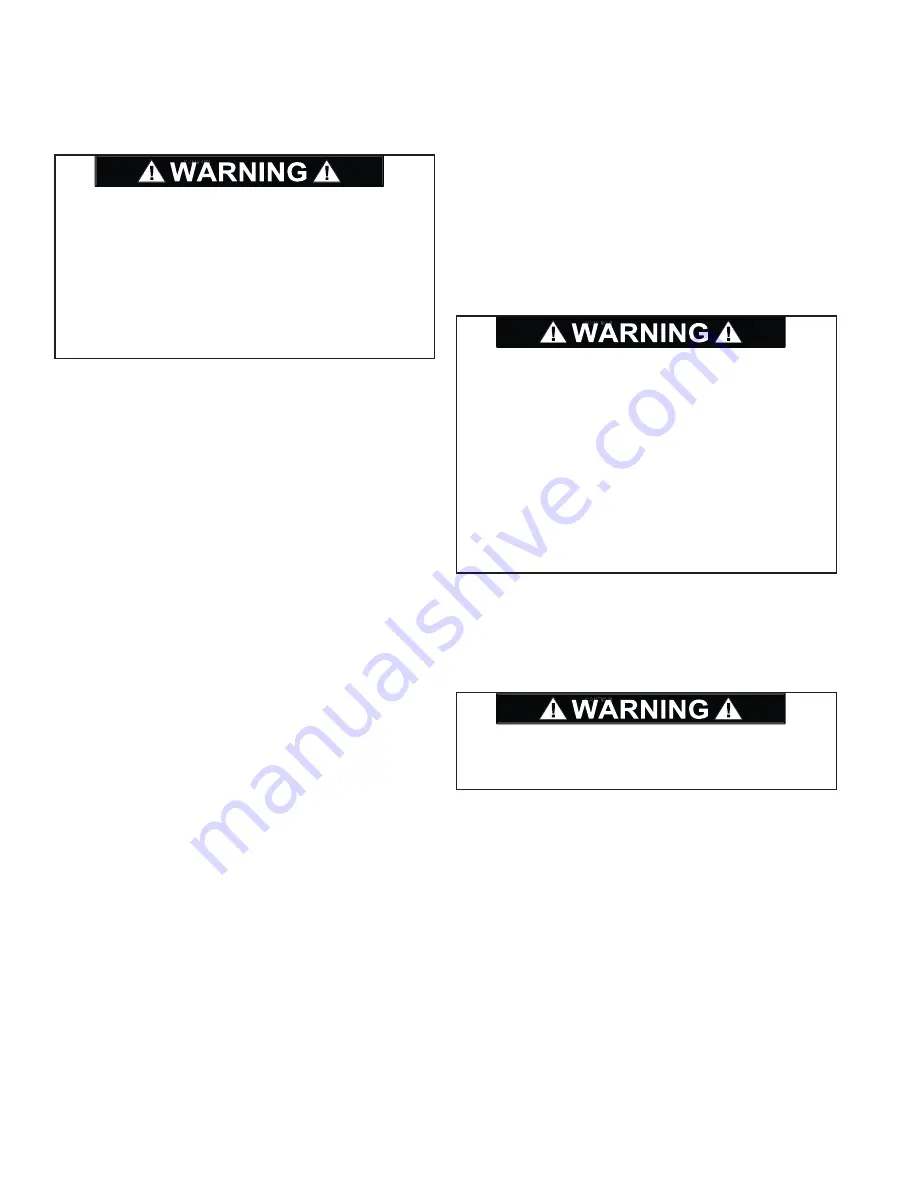
14
DRUM CLUTCH OPERATION
Visually ensure that the drum clutch is fully engaged and
the clutch control lever is at full travel or locked in its de-
tent
BEFORE
attempting to use the winch under load.
NOTE:
Actuation of the drum clutch is typically accom-
plished using either air cylinder controls or some form of
mechanical control (i.e. push-pull cable, mechanical link-
ages, etc.). Any means used to control the drum clutch
must allow full travel of the lever without binding the clutch,
or should include locking detents at each position.
T
o ENGAGE the drum clutch:
1. Insure the winch motor is stopped and there is no load
on the wire rope. The prime mover must be stopped in
neutral and the parking brake must be set.
2. Move the clutch control lever fully into the “Engage”
position. If the lever will not settle into the fully engaged
position, the clutch is not fully engaged. At this point,
it may be necessary to MANUALLY rotate the cable
drum slightly in either direction to align the clutch lugs,
while continuing to hold slight pressure on the control
lever. Once the clutch lugs are properly aligned, the
clutch should easily engage fully with the clutch plate
on the cable drum.
To DISENGAGE the drum clutch:
1. Insure the winch motor is stopped and there is no load
on the wire rope. The prime mover must be stopped in
neutral and the parking brake must be set.
2. Move the control lever fully into the “Disengage” posi-
tion. If the control lever has any resistance to shift, the
cable drum may be MANUALLY rotated in the direction
to haul-in wire rope to relieve the self-energized load
on the clutch lugs and allow the clutch to properly dis-
engage.
NOTE: If your application involves lifting loads and does
not require the clutch to be disengaged, it is strongly rec-
ommended that the drum clutch be mechanically blocked
in the fully engaged position to avoid accidental disen-
gagement of the clutch under load.
DO NOT
move the load, the winch, or the winch plat-
form
BEFORE
making certain the drum clutch is set to
“ENGAGE” and the clutch is fully engaged. A partially
engaged drum clutch may “jump out” of engagement. A
load on the winch line may prevent a partially engaged
clutch from disengaging, but any change in load condi-
tion may allow the clutch to become disengaged unex-
pectedly. This action may cause a loss of load control
which could result in property damage, injury or death.
Accidental disengagement of the clutch while lifting or
lowering may cause a loss of load control, which could
lead to property damage, injury or death.
DO NOT
attempt to engage the drum clutch while the
cable drum is rotating.
DO NOT
attempt to disengage
the drum clutch with a load applied to the wire rope.
DO
NOT
use “cheaters” to extend the shift lever length or
other means to apply undue force on the lever. Engag-
ing or disengaging the drum clutch while the cable drum
is rotating or under load, or the use of undue force, may
result in damage to the drum clutch components. Dam-
aged drum clutch components may allow the drum
clutch to become disengaged under load, and cause a
loss of load control, which could result in property dam-
age, injury or death.
Summary of Contents for BRADEN HP125B
Page 2: ...2...





























